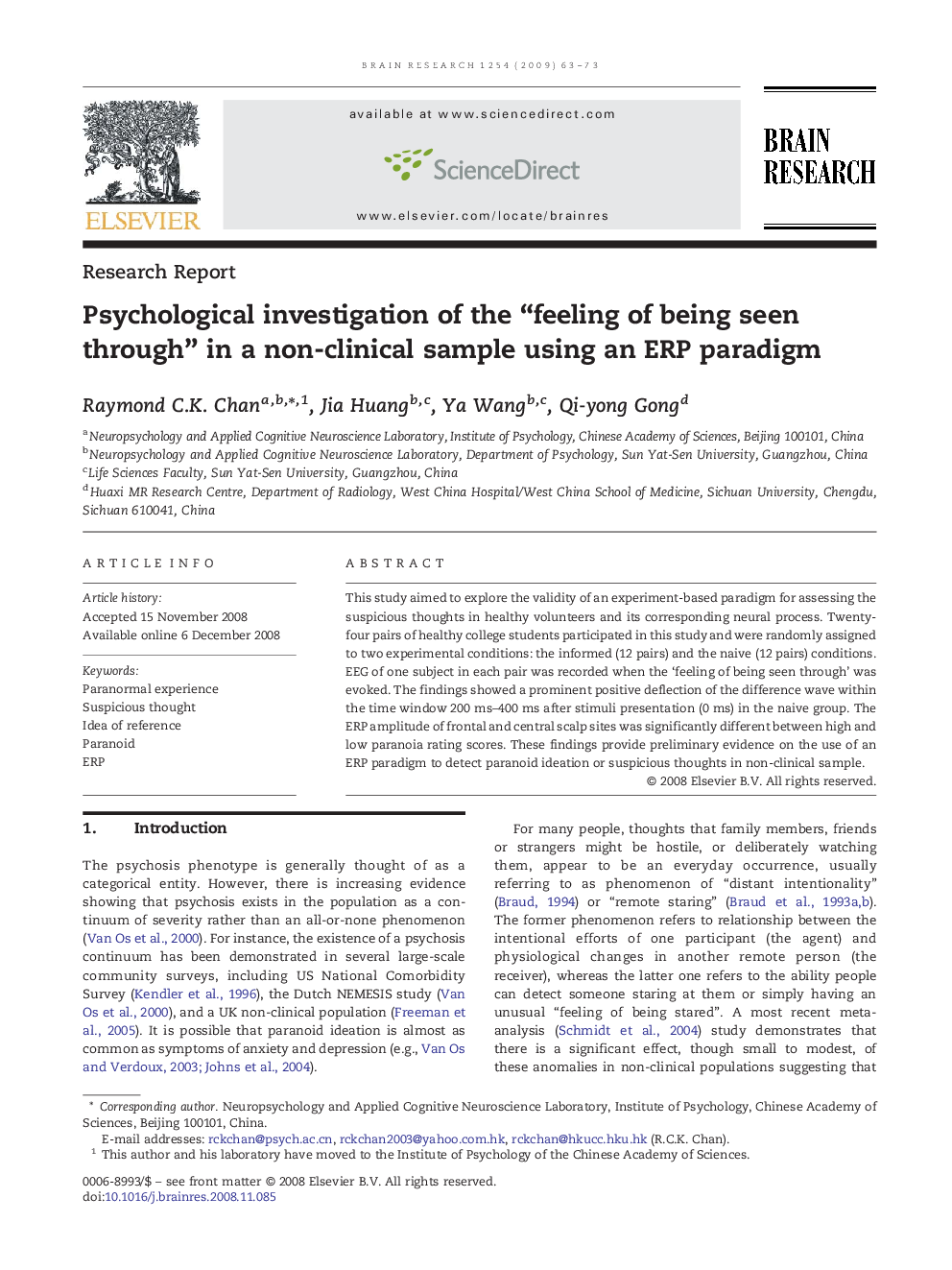| Article ID | Journal | Published Year | Pages | File Type |
|---|---|---|---|---|
| 4328742 | Brain Research | 2009 | 11 Pages |
Abstract
This study aimed to explore the validity of an experiment-based paradigm for assessing the suspicious thoughts in healthy volunteers and its corresponding neural process. Twenty-four pairs of healthy college students participated in this study and were randomly assigned to two experimental conditions: the informed (12 pairs) and the naive (12 pairs) conditions. EEG of one subject in each pair was recorded when the 'feeling of being seen through' was evoked. The findings showed a prominent positive deflection of the difference wave within the time window 200Â ms-400Â ms after stimuli presentation (0Â ms) in the naive group. The ERP amplitude of frontal and central scalp sites was significantly different between high and low paranoia rating scores. These findings provide preliminary evidence on the use of an ERP paradigm to detect paranoid ideation or suspicious thoughts in non-clinical sample.
Keywords
Related Topics
Life Sciences
Neuroscience
Neuroscience (General)
Authors
Raymond C.K. Chan, Jia Huang, Ya Wang, Qi-yong Gong,
